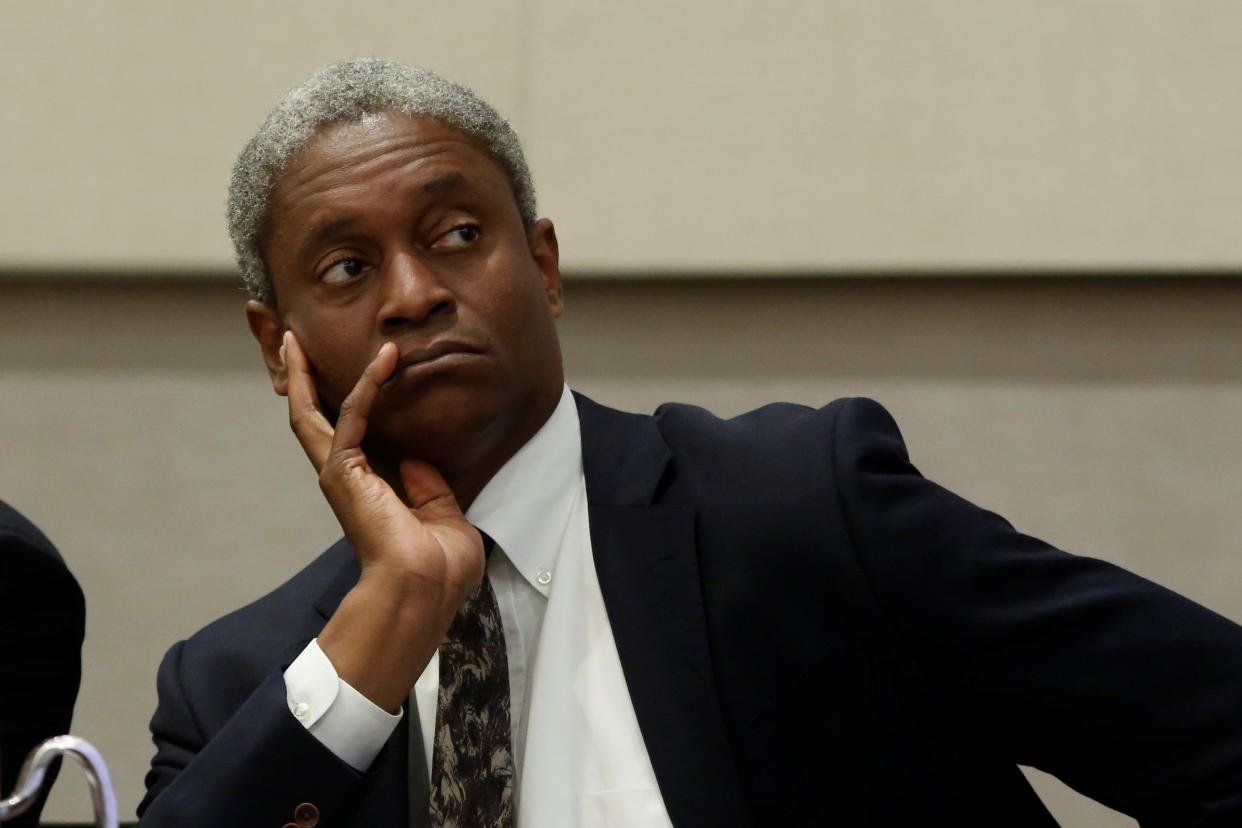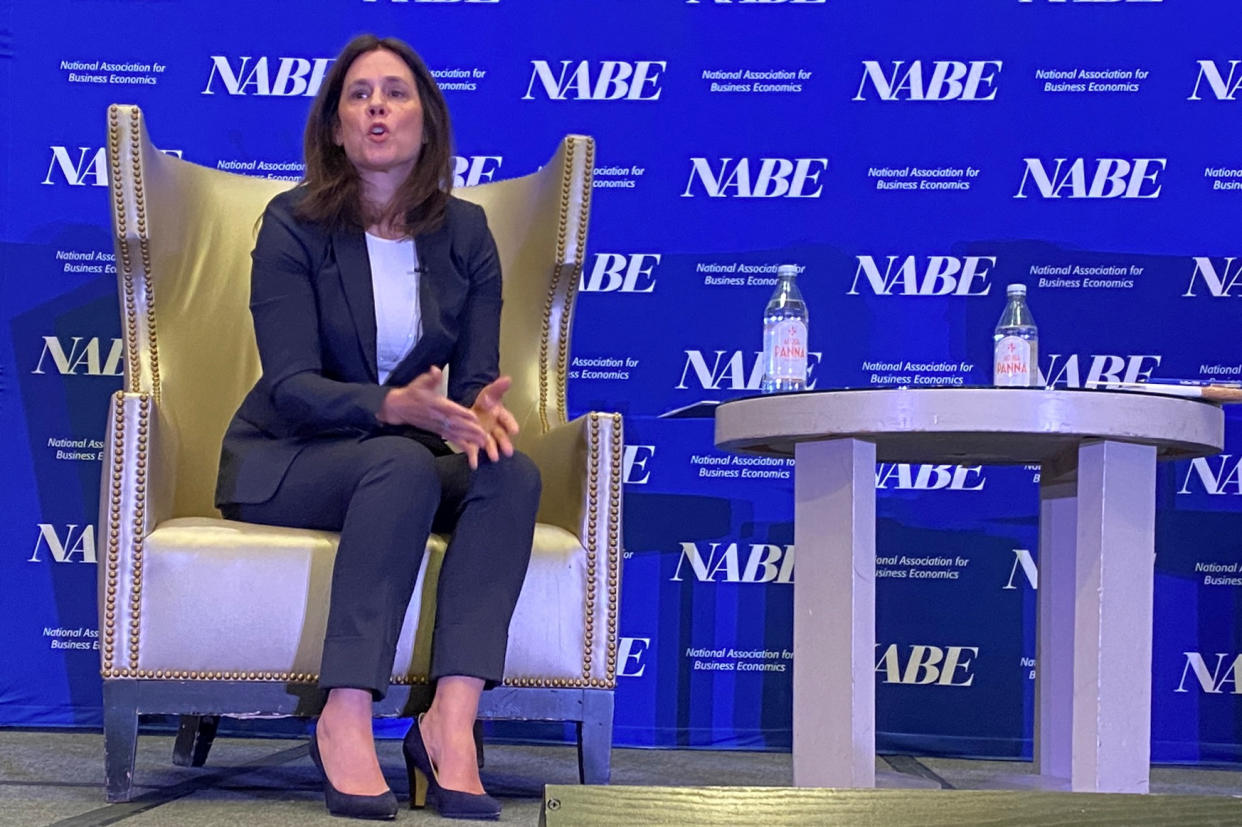Another hot inflation reading fans fears Fed will push back rate cuts
Another hotter-than-expected inflation reading is fueling investor fears that the Federal Reserve will have to push back the number and timing of interest rate cuts this year.
The Consumer Price Index (CPI) rose 3.5% over the prior year in March, an acceleration from February's 3.2% annual gain in prices and more than economists expected.
The year-over-year change in the so-called "core" CPI — which excludes volatile food and energy prices — was 3.8%, which was the same level as February but a tenth of a percent higher than expected.
"There is no doubt this is somewhat disappointing," Greg Daco, EY chief economist, told Yahoo Finance, adding that "there is no denying that this firmer inflation print does put more pressure on policymakers to sustain likely a higher-for-longer monetary policy stance."
Investors agree. The stock market fell following the CPI release, and the odds in favor of a June rate cut from the Fed evaporated, stomping out what had been a commonly held belief on Wall Street.
Traders who had been betting on a June cut now see a roughly 85% chance the Fed does nothing in June and a roughly 41% chance of a cut in July.
They also scaled back the number of rate cuts they see this year to two, less than the median of three penciled in by Fed officials at their last policy meeting in March.
The minutes of that meeting released Wednesday showed that "almost all" participants agreed there would be rate cuts at some point this year even as some noted that hotter inflation readings at the start of the year shouldn’t be discounted as "statistical aberrations."
"Participants generally noted their uncertainty about the persistence of high inflation and expressed the view that recent data had not increased their confidence that inflation was moving sustainably down to 2%," according to the minutes.
Fed officials agreed, however, that they had reached the peak on the current rate-tightening cycle and that monetary policy was well positioned to respond to the economic outlook, including the possibility of keeping rates higher for longer if inflation drops more slowly.
They expect there to be bumpy, uneven monthly inflation readings on the path to their 2% inflation target
Read more: What the Fed rate decision means for bank accounts, CDs, loans, and credit cards
Since that March meeting some Fed officials have offered new warnings that the number of cuts they expect in 2024 could be reduced if inflation continues its hot streak and the economy keeps accelerating.

Atlanta Fed president Raphael Bostic, who has scaled back the number of rate cuts he sees this year to only one, told Yahoo Finance Tuesday that he can’t "take off the possibility that rate cuts may even have to move further out."
Bostic also didn't rule out zero rate cuts for 2024.
'It puts pressure on them'
The March report for CPI marks the third month in a row that inflation has proven to be hotter than expected. And the month-over-month increases for CPI and core CPI in March were 0.4%, both higher than anticipated.
“Anything worse than 0.2% prints pushes up 3-month and 6-month annualized rates near to or above 3% in the coming months and prevents the year-over-year rate from dipping to 2.5% or lower by the April data,” Matthew Luzzetti, chief US economist for Deutsche Bank Securities, said in a research note.
The hot start to 2024 "is basically telling the Federal Reserve they are not getting that consistent downward movement towards the 2% that they want to see," Victoria Fernandez of Crossmark Global Investments told Yahoo Finance.
"It puts pressure on them to keep rates at an elevated level," she added.
A higher inflation report also follows a strong labor report Friday that showed the US economy generated more jobs than expected in March while the unemployment rate ticked lower and wage growth remained steady, putting the labor market on firmer footing than many economists had predicted.
"The Federal Reserve is not nearly as restrictive as they think," said Joe Davis, chief global economist at Vanguard.
"I have been confused as [to] why the rush to cut. The data coming in on the labor market and today’s inflation report show concerns of racing to soon to cut. There are still embers of inflation here and there in the economy."
Other Fed officials have poured cold water on near-term hopes for an easing of monetary policy.
"I believe it’s much too soon to think about cutting interest rates," Dallas Fed president Lorie Logan said in a speech Friday. "I will need to see more of the uncertainty resolved about which economic path we’re on."

Fed Governor Michelle Bowman also voiced concerns Friday, even saying the Fed may need to raise rates at a future meeting if progress on inflation stalls or reverses. Her baseline outlook, however, is that the Fed will still lower rates this year.
Some other Fed officials did offer assurances in the last week, before the most recent inflation data, that their estimates had not changed.
They include Cleveland Fed president Loretta Mester and San Francisco Fed president Mary Daly, who both stuck with a prediction for three cuts in 2024.
The new inflation data on Wednesday also produced some political reactions, a sign that the Fed's decision on rates will most certainly collide with the presidential election this fall.
"Today’s report shows inflation has fallen more than 60% from its peak, but we have more to do to lower costs for hardworking families," President Joe Biden said in a statement Wednesday. "Prices are still too high for housing and groceries, even as prices for key household items like milk and eggs are lower than a year ago."
Former President Donald Trump, who is running against Biden, wrote on Truth Social that "inflation is back — and raging."
He also asserted that the Fed "will never be able to credibly lower interest rates, because they want to protect the worst President in the history of the United States."
Read the latest news on inflation and what it means for the Federal Reserve:
Higher gas prices helped drive hotter-than-expected inflation in March
Why auto insurance costs are rising at the fastest rate in 47 years
Click here for the latest economic news and indicators to help inform your investing decisions.
Read the latest financial and business news from Yahoo Finance
